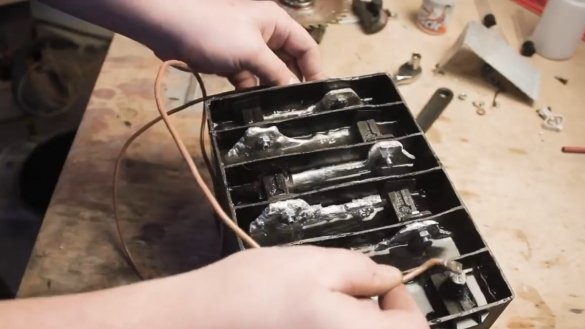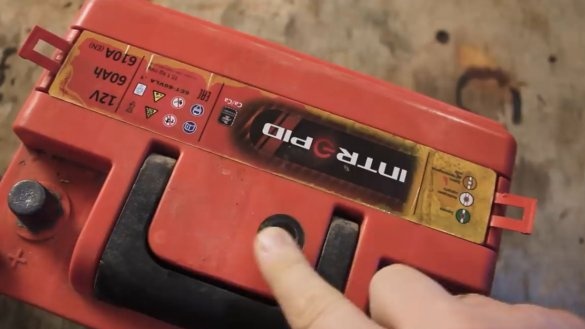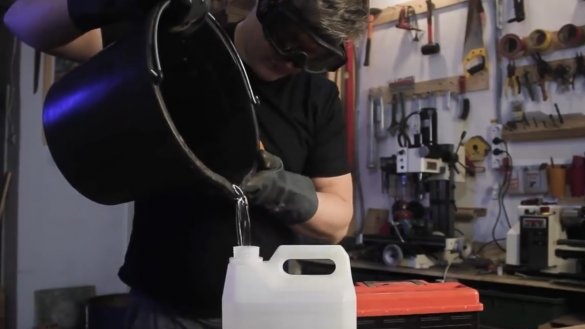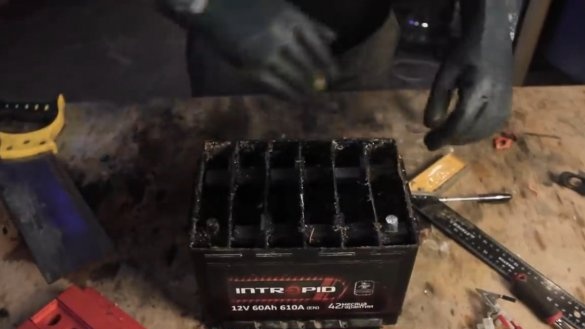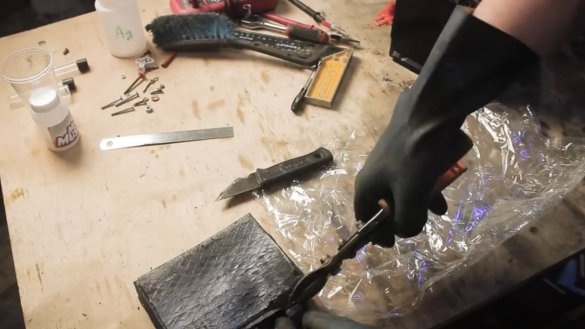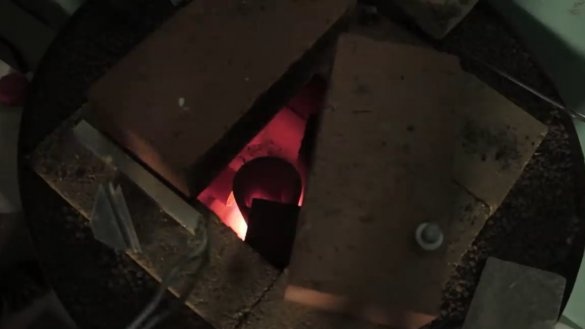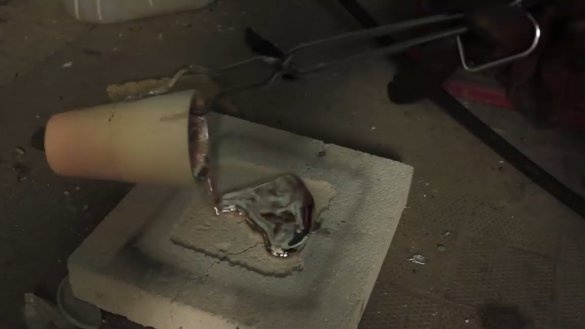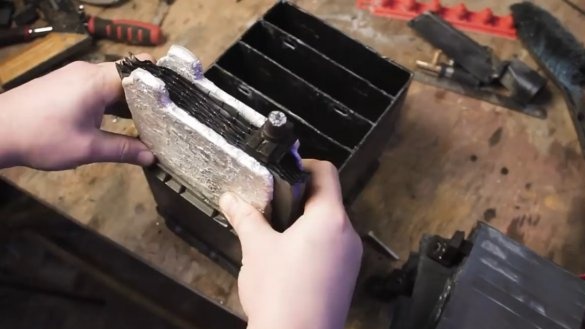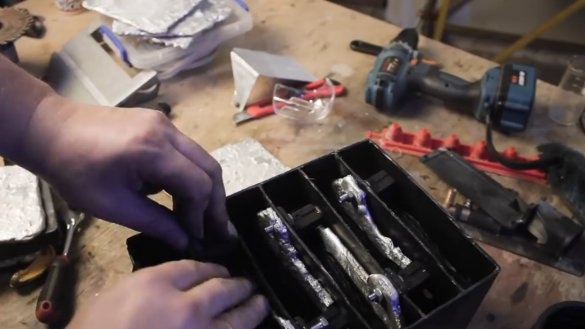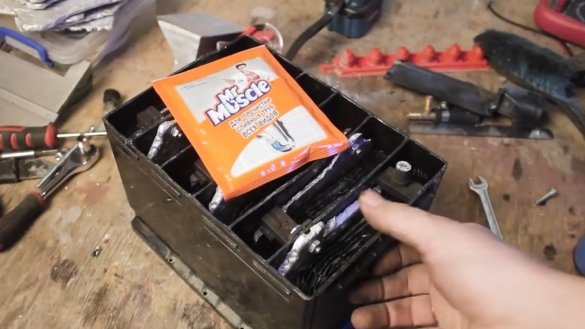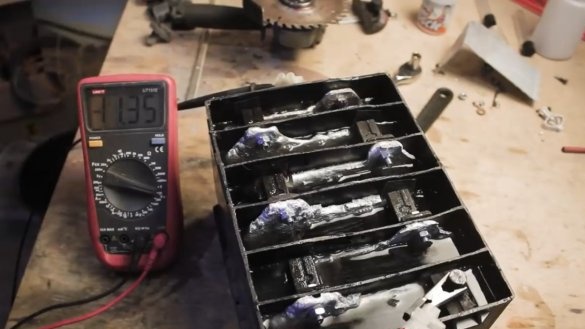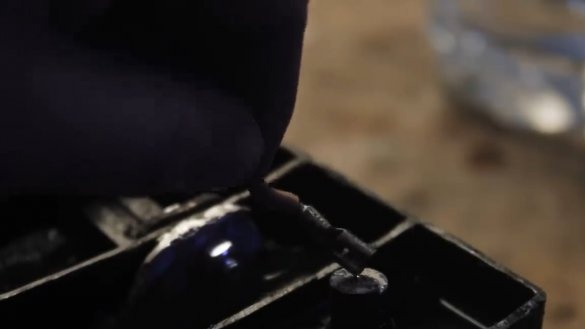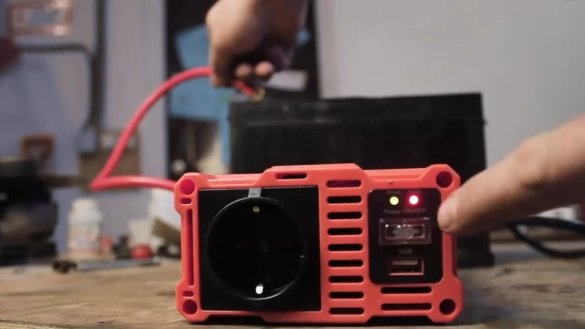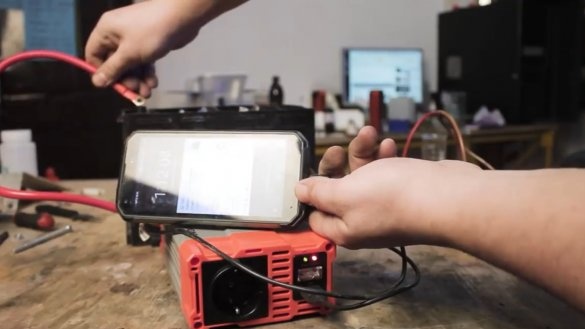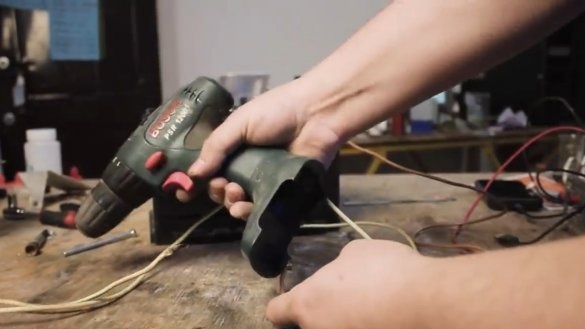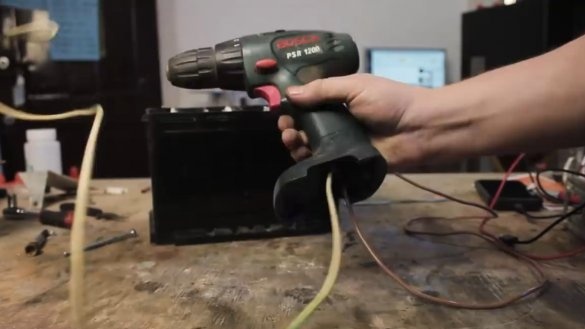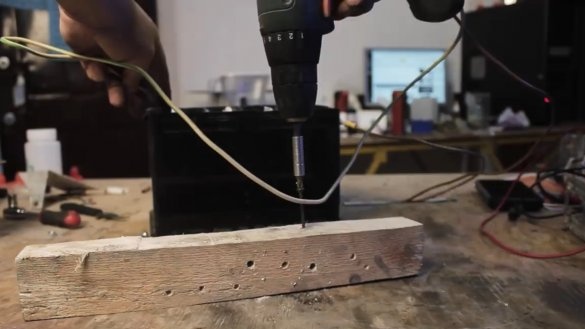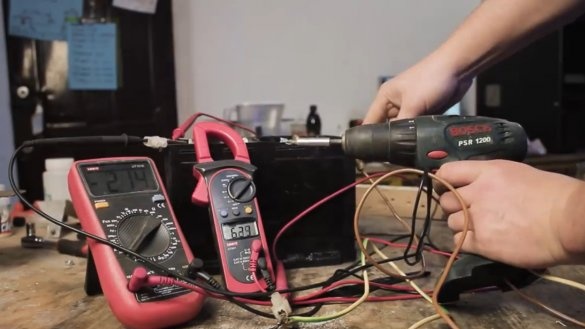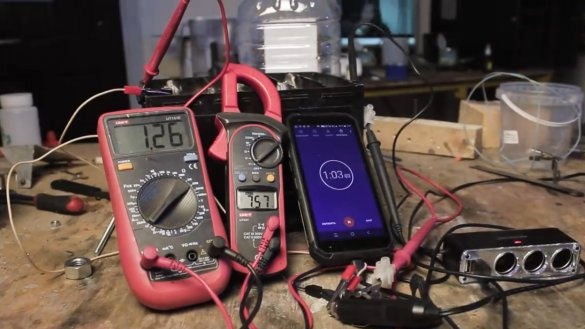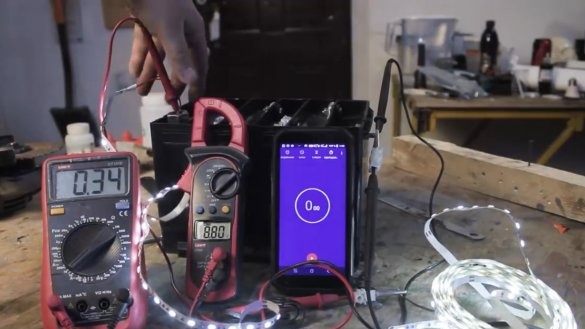Greetings the inhabitants of our site!
Winter has come, it has become colder, and this old battery is no longer able to start the car engine.
Most likely the battery has lost a significant part of its capacity, and now it has 2 ways, either recycling, or try to make something more interesting out of it. It is on the basis of this battery and several pieces of aluminum, the author of YouTube channel "Fiery TV", decided do it yourself make a homemade electric generator.
We start with the fact that it is necessary to drain everything that can pour out of the battery.
And since electrolyte is a valuable resource, so you should not squander it, carefully pour it into a canister, let it be stored, useful for future projects.
The battery is free of fluid; now it is necessary to trepan its cover. This can be done with a hacksaw.
Lead terminals are also sawed together with plastic naturally. Here is the beauty obtained:
Next is the next task - to pull out all the electrodes, and this must be done in the most humane way possible, if possible without damaging them, they will still be useful to us. First of all, it is necessary to cut off the places of their adhesions.
Next, the electrode packs now need to be divided. Those electrodes that do not have envelopes can be safely removed to the side, we will not need them. These envelopes are made of special porous PVC plastic, they allow unhindered current to pass through them and prevent a short circuit from occurring. Oddly enough, but this is probably one of the most important parts in the battery.
The electrodes that are in the envelopes consist of a lead grid on which lead oxide is deposited. We need to prepare these electrodes for further actions, namely, we need to thoroughly rinse them from acid residues. This can be done by soaking the metal in a large amount of water (the most ordinary, from the tap), periodically replacing it with fresh.
We’ve finished the preparation of the battery, then we will need aluminum electrodes. You can of course buy an aluminum sheet and cut it into pieces of the right size, or you can go the more difficult way, as the author, but much cheaper and cast the electrodes yourself.
To do this, in the gas block, you need to make recesses to get a shape.This gas block is far from the first freshness, it has endured a lot, overheated a couple of times and even has a crack, but the author retains the hope that he will pass another test and not fall apart completely.
Next, proceed to the next step. The author collects all the aluminum debris that has accumulated over the years, various scraps, tubes, corners, aluminum cans for drinks, in short, all the aluminum junk and melts it in the furnace.
The molten aluminum has a fairly high surface tension and it is rather difficult to fill it with a thin layer, so you need to slightly distribute it around the edges to occupy the entire space.
In this case, special beauty is not required, it will still be a consumable, but the protruding parts that increase the thickness of the plate still need to be trimmed.
Now you need to pack the aluminum plates together with the lead oxide electrodes back into the battery case. In total, as many as 12 plates were cast from aluminum junk. At first, the author wanted to place two plates in each cell, but then he realized that this was a bad idea, since it is impossible for the electrodes to fit too tightly together.
As a result, it was decided to place one plate in each jar. The result is such a beauty:
The result was a chemical power generator. It can be stored in this form for an infinitely long time and at the same time it does not undergo self-discharge, which is the most important thing. To start it, just fill it with diluted alkali, well, or in a pinch, a solution of ordinary table salt is suitable. Naturally, with alkali it will still be better. In the hardware store you can buy these bags with a muscular uncle:
Such a bag contains one hundred percent sodium alkali. To prepare the solution, you need to take 5 liters of water and pour the contents of the bag there.
The electrolyte is ready. The resulting solvent is poured into the chemical generator, and as soon as the alkali touches aluminum, it is possible to obtain an electric current.
As a result, it turned out to get 11-plus volts, not bad. If you check for a short circuit, the resulting battery even sparks a little.
The spark is certainly much less than from a conventional battery, but still there is current. Now let's try to connect the car converter.
He turned on, but showed an error. This happened because the battery voltage is lower than 11.5V, in short, this device does not allow the battery to stick and refuses to work with such voltage.
But if you connect the smartphone to the usb port of the converter, then it even starts to charge, which is already good.
Let's continue the experiment. The author found here such a screwdriver, a simple 12 volt.
We connect the wires directly to the device.
In general, for the normal operation, the screwdriver needs a fairly large current, but in principle, the screwdriver started spinning from our electric generator, but if he can twist something, now we will check this.
Well, of course I could, though quite a bit. Now let's see what current flows in the circuit and how much voltage sags.
Well, there’s nothing special to comment on here, the voltage sags to about 5-6V and at the same time there is a current of 2A. For technology and power tools this is not enough by itself, but for a light source it may be quite enough. The author connected a 5-meter piece of LED strip to the battery.
As you can see in the image above, the voltage drops to about 8V, and the current goes more than 200 milliamps. In general, this LED strip is designed for a voltage of 12V, and with a homemade battery the voltage constantly jumps, then a little higher, a little lower and you can see that if the voltage drops to 8V, then the current practically stops flowing.
And the voltage sags due to the fact that the concentration of the electrolyte is reduced, since the capacities in the car battery are quite small and the electrolyte does not fit much physically there.
We continue the experiment. Let's plug in the car charger that plugs into the cigarette lighter.
We see that at a voltage of about 5V, the current is about 400mA. We will replace the electrolyte with a fresh one and try again with car charging.
With fresh electrolyte, the current is already more than 1A and sags, the voltage nonetheless sags to 7.5V. About 20 minutes passed and the charger begins to realize that something is wrong with the current source.
As a result, the current starts to jump from 0 to 1A, then it calms down and freezes at around 400mA. Most likely, charging switches to the so-called slow charging mode and produces a minimum current (300mA) at the output. In this mode, charging stably for a long time.
And only when the battery voltage drops below 6V, does the charger simply stop charging. But you can fill in fresh electrolyte again and the voltage on the battery will increase again and the charger will resume operation as if nothing had happened.
In order not to suffer from a change in the electrolyte, you can remove some of the electrodes from lead oxide, there are still a lot of them there. Instead of 6 envelopes, you can leave only a couple in each bank. This will not affect the output power, but the weight of the battery will significantly decrease and the internal capacity will increase. As a result, the battery will be able to work much longer at a single electrolyte charge.
Thank you for attention. See you soon!
Author's video:

